
Explore your neighborhood nature by going on a bug safari.
- Subject:
- Science
- Material Type:
- Activity/Lab
- Demonstration
- Author:
- NC State Parks
- Date Added:
- 06/23/2021


Explore your neighborhood nature by going on a bug safari.
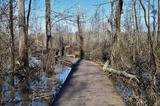
Virtual field trip to Haw River State Park.

The North Carolina Symphony's Musical Meditations series offers moments to be calm, present, and mindful, supporting stress-management during the busy school day. Each short video features the NC Symphony playing musical excerpts from famous composers set to the breathtaking visuals from North Carolina State Parks.
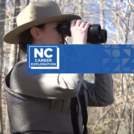
In this short video, students explore the career of a State Park Ranger. This N.C. Career Exploration video is part of a series that introduces students to unique professions within the North Carolina Department of Natural and Cultural Resources. This series will help students consider what they like to do, where their interests and skills connect, and ultimately what career path they may want to take.

In this short video, students will learn how female loggerhead sea turtles make their way to beaches all along the Atlantic Ocean to lay their eggs.

In this short video, students learn how fire plays an important role in the survival of the plants (such as venus flytraps and longleaf pines) in the habitat of Carolina Beach State Park.

In this short video and accompanying activity and readings, students learn about the Venus Fly Trap and how it adapts to its environment to survive.

In this short video and accompanying experiment activity and readings, students learn about all kinds of forces in motion at Falls Lake State Recreation Area. Chopping wood, riding a bike, pitching a tent, canoeing — students can see each of these examples to discover out how objects (and people) move in their surroundings.

In this short video, accompanying activities, and readings, students learn about North Carolina's State Reptile - the Eastern Box Turtle! Students also learn how State Park Rangers collect data on these turtles and how that helps us learn more about them and protect them.

In this short video, accompanying activity, and readings, students learn about wetlands by exploring the wetlands at Haw River State Park.

In this short video and accompanying activity and readings, students learn about a unique blackwater river in North Carolina - the Lumber River. The river has played an important role for the plants, people, and animals that have called it home.

In this short video and accompanying activity and readings, students learn about navigating the Lumber River and the people who navigated it for hundreds of years.

In this short video, accompanying activity, and readings, students learn about the wildflowers at Medoc Mountain State Park. These resources examine how wildflowers survive and their role in their ecosystem.

In this short video and accompanying activity and readings, students learn how each rock has a unique story about how it formed and how the forces of erosion shape what it looks like today. There are places where, long ago, big pockets of magma cooled deep underground, and after years and years of erosion, we can now see this igneous rock at the surface of the Earth. This video shows how we can see one of these locations in North Carolina - a granodiorite pluton called Stone Mountain.

In this short video and accompanying activity and readings, students learn about Longleaf Pine Ecosystems by exploring Weymouth Woods Sandhills Nature Preserve in North Carolina.

In this short video and accompanying activity and readings, students learn about the Weymouth Woods Sandhills Preserve and the many unique plants and animals that call this type of ecosystem home - including the red-cockaded woodpecker.
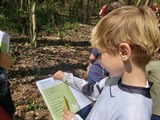
The NC Kids' Exploration Journals are a fun educational tool to help youth explore their communities and natural surroundings! Each journal contains: 18 multidisciplinary activities with guided prompts, 6 lined journal pages for recording observations and reflections, and 4 blank pages for individual creativity.
The digital versions of the journal are designed to be printed out for students either as individual activities or in its entirety so that they can explore their school yard, local park, or own backyard. Though designed for 1st - 5th-graders, older audiences may enjoy them too! They are also available in both English and Spanish languages.
While supplies last, hard copies of the journals are currently available for free to teachers by contacting karen.ipock@ncdcr.gov.
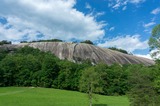
Virtual field trip to Stone Mountain State Park.
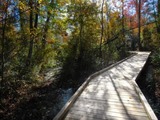
Virtual field trip of the Dismal Swamp State Park.

Help students explore an important moment of environmental activism in North Carolina with Save Our Sand Dunes by Hannah Bunn West and with Ann-Cabell Baum. This complementary learning guide to the book is designed to help educators guide young readers in discovering how Carolista Baum rallied a community and advocated for local and state leaders to preserve Jockey's Ridge.